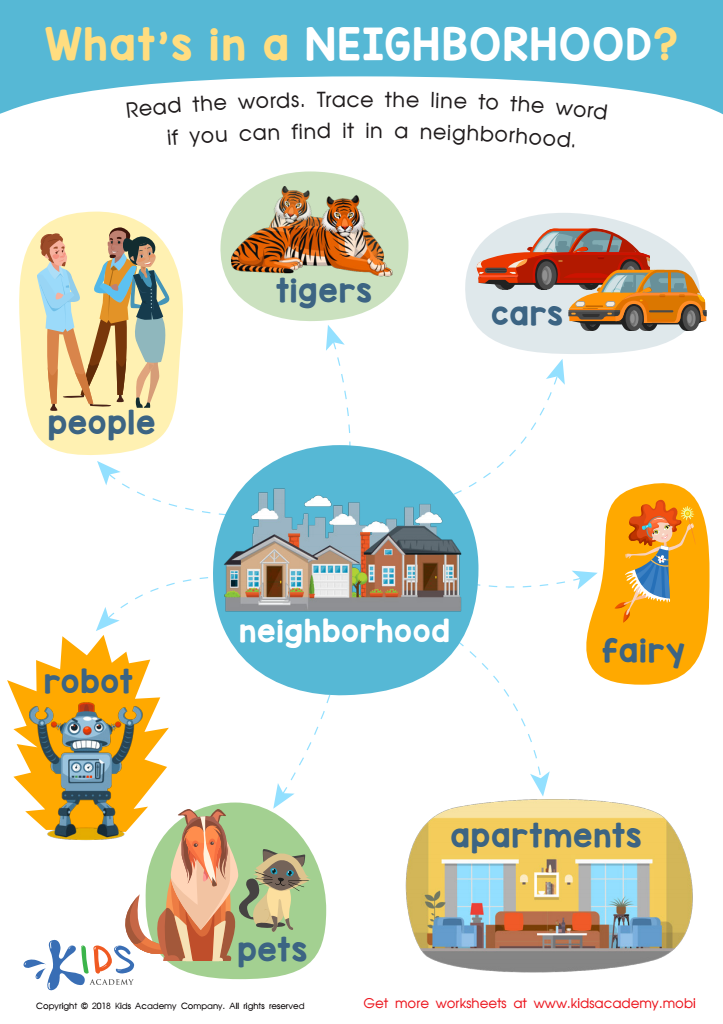Understanding communities Normal Community Worksheets for Ages 3-6
3 filtered results
-
From - To
Introducing "Understanding Communities Normal Community Worksheets for Ages 3-6" by Kids Academy! Designed to nurture young minds, these printable worksheets engage children in learning about various community roles, places, and functions. Through interactive activities, kids ages 3-6 explore the essentials of social studies, fostering early awareness and appreciation of their communities. Each worksheet is crafted to be fun and educational, encouraging critical thinking and real-world connections. Perfect for classrooms or homeschool settings, these resources build foundational skills in a creative and meaningful way. Dive into the world of communities with Kids Academy and inspire a lifelong love of learning!


What is a neighbor Worksheet


Community: Neighbors Worksheet


What's in a Neighborhood? Worksheet
Understanding communities is crucial for young children, especially those aged 3-6, as it helps them develop a sense of belonging, empathy, and cooperation. In the early years, children begin to form their identity within the context of their family, classroom, and broader neighborhood. By learning about different communities and their dynamics, young children can better understand how various roles and relationships function, which promotes social and emotional growth.
Exposure to community concepts teaches kids fundamental social skills such as sharing, respecting others, and teamwork. When parents and teachers actively engage children in community-centered activities, they lay the groundwork for future interactions and relationships. For instance, reading stories about diverse communities, participating in group play, and visiting local events can help children see and appreciate the value of diversity and teamwork.
Moreover, understanding communities boosts cognitive development. Discussing different professions, amenities, and cultural practices within a community expands a child's vocabulary and general knowledge. This readiness helps them transition into more structured educational settings with a solid foundational understanding.
In sum, prioritizing community learning for young children supports their holistic development—socially, emotionally, and cognitively—preparing them not just for school, but for life within a larger, interconnected world.
 Assign to My Students
Assign to My Students















